On January 29, 2025, a tragic midair collision occurred over the Potomac River near Ronald Reagan Washington National Airport (DCA) between American Eagle Flight 5342, a Bombardier CRJ700 operated by PSA Airlines, and a U.S. Army Sikorsky UH-60 Black Hawk helicopter. The crash, which killed all 67 people aboard both aircraft (64 on the jet, 3 on the helicopter), was the deadliest U.S. aviation disaster since 2001. The plane was on final approach from Wichita, Kansas, while the helicopter was on a training mission.
Key factors under investigation include the helicopter flying above its 200-foot altitude limit (at 278 feet), potential altimeter malfunctions, and air traffic control issues, with only one controller managing both planes and helicopters.
The National Transportation Safety Board (NTSB) has recovered black boxes from both aircraft and is examining staffing shortages, communication failures, and congested airspace. The FAA has restricted helicopter traffic near DCA, and the NTSB recommends permanent changes to routes to prevent future incidents. Recovery efforts have retrieved all victims’ remains, including figure skaters, coaches, and a young consultant, as the investigation continues.
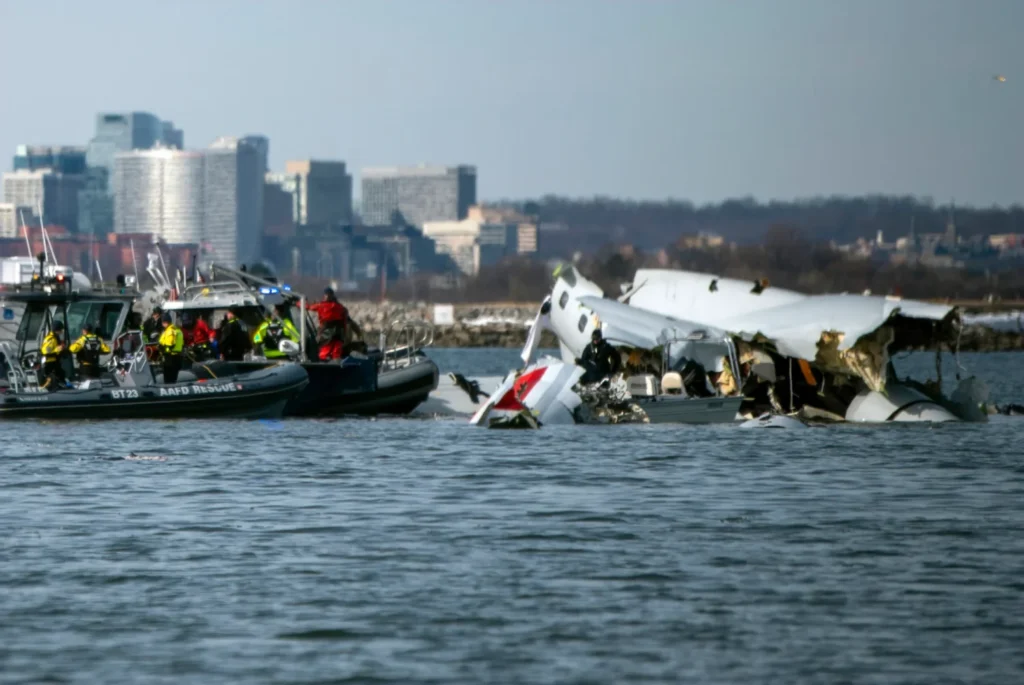
Tragic Midair Collision Over Washington, D.C.: Unraveling the January 2025 Potomac River Crash
On January 29, 2025, a catastrophic midair collision between American Eagle Flight 5342, a Bombardier CRJ700 operated by PSA Airlines, and a U.S. Army Sikorsky UH-60 Black Hawk helicopter claimed 67 lives, marking the deadliest U.S. aviation disaster since 2001. The crash, which occurred over the Potomac River near Ronald Reagan Washington National Airport (DCA), has sparked intense scrutiny of aviation safety protocols, air traffic control operations, and military flight procedures.
This article delves into the details of the tragedy, the ongoing National Transportation Safety Board (NTSB) investigation, and the broader implications for airspace safety, incorporating key insights from recent reports and hearings.
The Incident: A Night of Tragedy
At 8:47 p.m. on January 29, 2025, American Eagle Flight 5342, carrying 60 passengers and four crew members from Wichita, Kansas, was on final approach to Runway 33 at DCA. Simultaneously, a U.S. Army Black Hawk helicopter, call sign PAT25, with three crew members from Fort Belvoir’s 12th Aviation Battalion, was conducting a routine training mission along the Potomac River’s Route 4. At approximately 300 feet above the river, just half a mile from the runway, the two aircraft collided, resulting in an explosion captured on webcam footage and a subsequent crash into the frigid Potomac River. All 67 aboard both aircraft perished, including elite figure skaters, coaches, a Kansas City Chiefs fan, and a young civil rights attorney, among others.
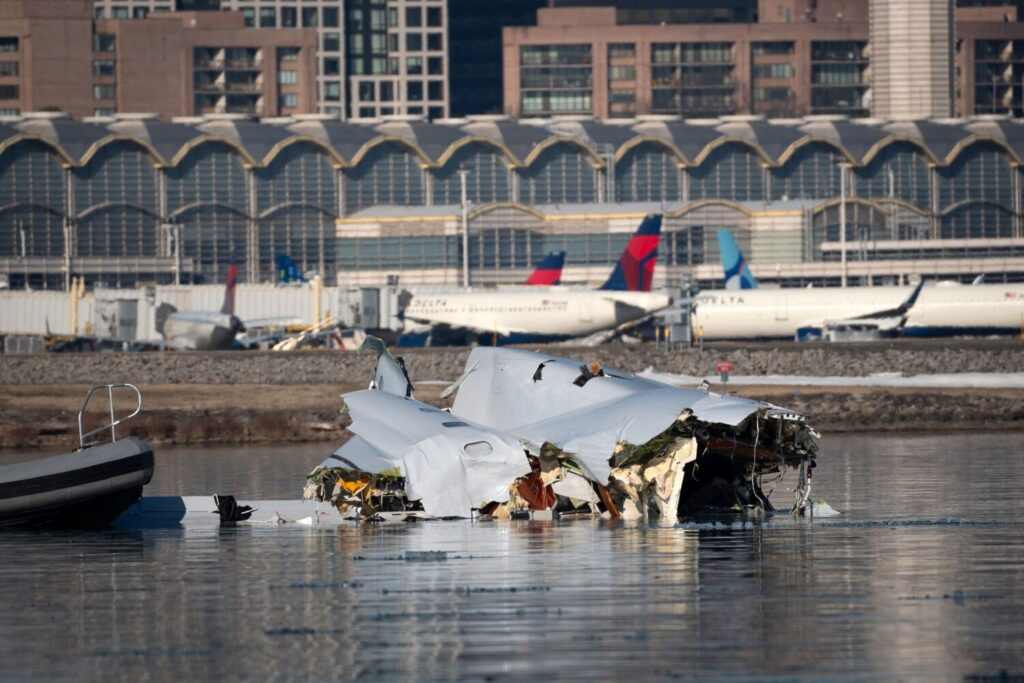
The collision, the first major U.S. commercial airline crash since 2009, sent shockwaves across the nation. Recovery efforts, complicated by cold water and strong currents, retrieved all victims’ remains by February 4, along with the black boxes from both aircraft, which are now under analysis at NTSB labs
What Went Wrong? Key Findings from the NTSB Investigation
The NTSB’s preliminary report and investigative hearings, held from July 30 to August 1, 2025, have revealed critical factors contributing to the disaster:
- Helicopter Altitude Violation: The Black Hawk was flying at 278 feet, above the 200-foot ceiling mandated for helicopters on Route 4 near DCA. NTSB tests on similar Black Hawk models showed barometric altimeters consistently underreported altitude by 80–130 feet, potentially misleading the crew. The inaccurate altimeter readings are a focal point of the investigation, as the helicopter may not have realized its dangerous proximity to the jet’s flight path.
- Communication Failures: Air traffic control (ATC) issued two warnings to the helicopter crew about the approaching jet, at two minutes and 90 seconds before the crash. The crew reported visual contact with an aircraft and requested visual separation, which was approved. However, a critical instruction to “pass behind” the jet, issued 20 seconds before impact, was not heard due to a momentary microphone press in the helicopter. The jet’s crew received a Traffic Collision Avoidance System (TCAS) alert 19 seconds before the crash and attempted to pull up, but it was too late.
- Single Controller Staffing: At the time of the crash, a single ATC controller managed both plane and helicopter traffic, a “not normal” arrangement typically handled by two controllers. While the FAA deemed this adequate for lower traffic volumes, the NTSB is examining whether staffing shortages—exacerbated by a national shortfall of 3,000 controllers—contributed to the oversight.
- ADS-B Inactivation: The Black Hawk’s Automatic Dependent Surveillance-Broadcast (ADS-B) system, which transmits location and altitude to other aircraft, was turned off, per Army policy for security reasons. This prevented the jet’s TCAS from detecting the helicopter earlier. The Army’s exemption from mandatory ADS-B use, granted by the FAA in 2019, has drawn criticism from lawmakers like Senators Ted Cruz and Maria Cantwell, who argue it increases collision risks.
- Congested Airspace and Ignored Warnings: Route 4, a helicopter path along the Potomac, had only 75 feet of vertical clearance from planes descending into DCA, a known safety risk. Since 2022, 85 near-miss alerts had been reported, yet FAA proposals to reroute helicopter traffic were rejected as “too political.” NTSB Chair Jennifer Homendy expressed outrage at the FAA’s inaction, noting that the agency transferred personnel rather than addressing systemic issues.
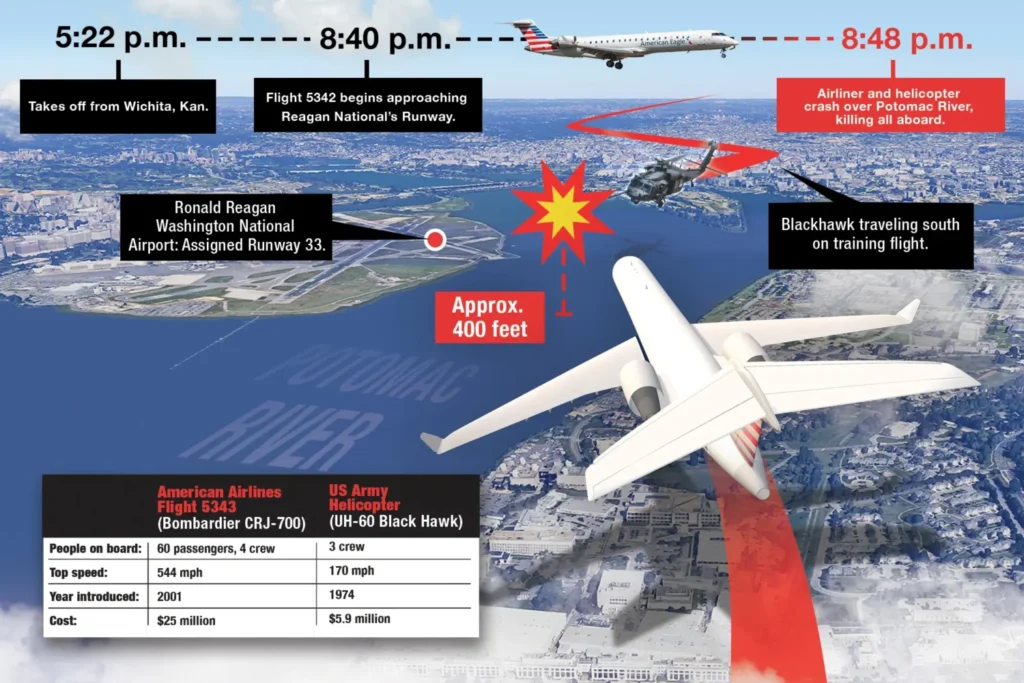
Victims and Their Stories
The crash claimed a diverse group of lives, including:
- Figure Skaters and Coaches: Over a dozen passengers, including U.S. and Russian figure skaters like Franco Aparicio, 14, and coaches Yevgenia Shishkova and Vadim Naumov, were returning from the 2025 U.S. Figure Skating Championships in Wichita.
- Military Personnel: The Black Hawk crew included Staff Sgt. Ryan O’Hara, 28, Chief Warrant Officer 2 Andrew Eaves, 39, and Capt. Rebecca Lobach, 28, all experienced aviators. O’Hara left behind a wife and young son.
- Civilians: Victims included Kansas City Chiefs fan Dustin Miller, attorney Kiah Duggins, 30, and the Schrock couple, who were en route to visit their daughter. First Officer Samuel Lilley, whose father flew Black Hawks on the same route, and pilot Capt. Jonathan Campos, an adrenaline enthusiast, were among the crew.
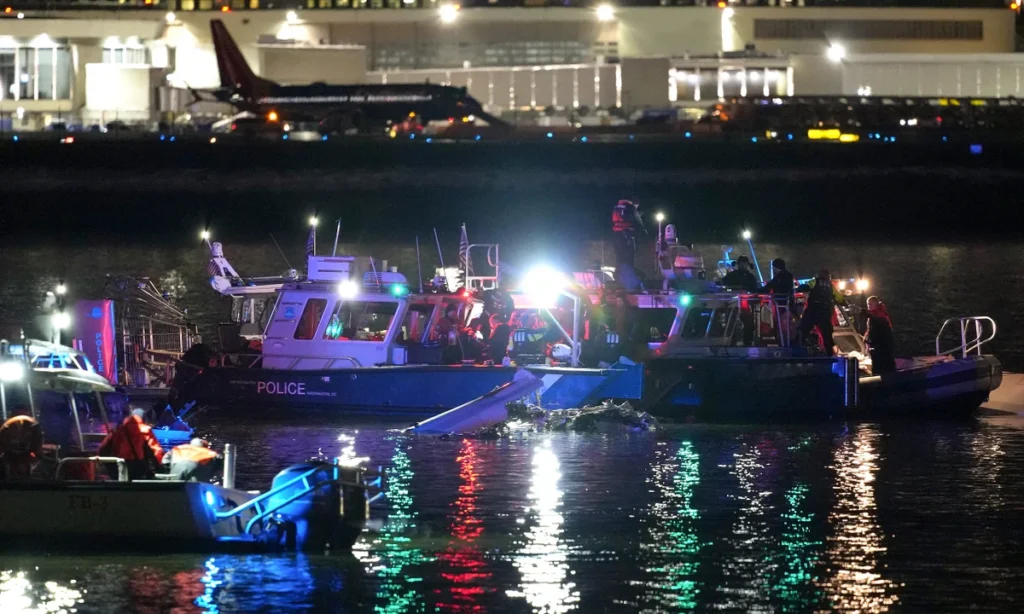
A growing memorial at Wichita’s Dwight D. Eisenhower National Airport honors the victims, with tributes of flowers and notes reflecting the community’s grief.
Aftermath and Safety Reforms
The crash prompted immediate action:
- FAA Restrictions: In March 2025, the FAA banned several helicopter routes near DCA, including Route 4, to reduce collision risks. ADS-B use is now mandatory near DCA, except for national security missions.
- NTSB Recommendations: The NTSB issued urgent safety recommendations, urging the Army to test all Black Hawk altimeters and reconsider ADS-B policies. The agency also criticized the FAA for bureaucratic delays in addressing known risks, with Chair Homendy calling for systemic fixes to prevent future tragedies.
- Public and Political Response: President Donald Trump called the crash a “tragedy of terrible proportions” but faced backlash for suggesting DEI hiring policies contributed, a claim dismissed as baseless. Senators Cruz and Duckworth have pushed for stricter oversight of military exemptions and ATC staffing improvements.
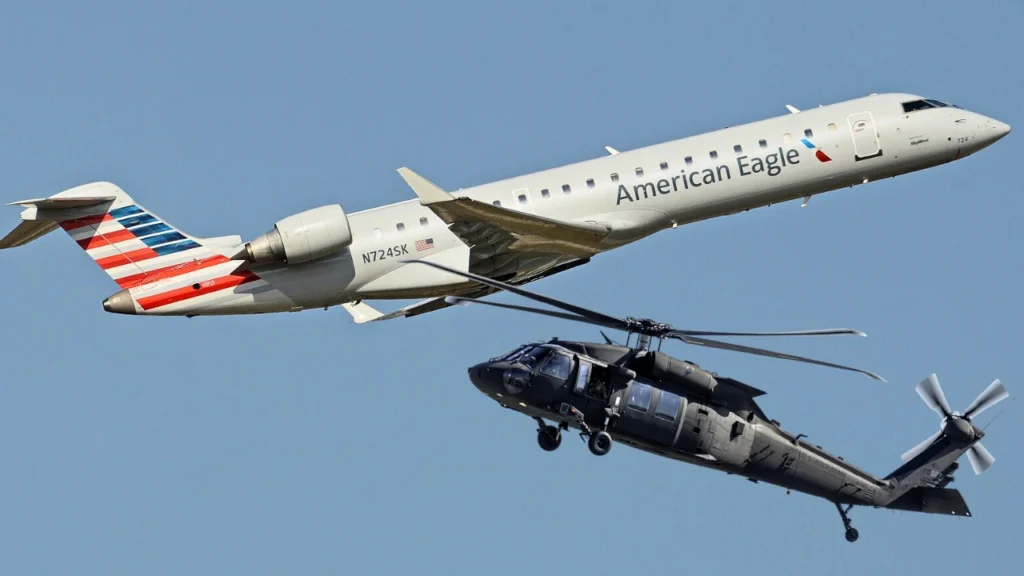
Looking Ahead: Preventing Future Tragedies
The January 2025 D.C. crash underscores the dangers of congested airspace and inadequate safety measures. The NTSB’s ongoing investigation, expected to conclude in 2026, will determine the official cause, focusing on altimeter accuracy, ATC protocols, and the Army’s ADS-B policy. Aviation experts, including Capt. C.B. “Sully” Sullenberger, have called for a comprehensive review of U.S. airspace to ensure such incidents are not repeated.
As recovery efforts conclude and families mourn, the tragedy serves as a stark reminder of the need for robust aviation safety systems. The loss of 67 lives, from young athletes to dedicated soldiers, has left an indelible mark on the nation, urging stakeholders to prioritize safety over bureaucracy.

Comments